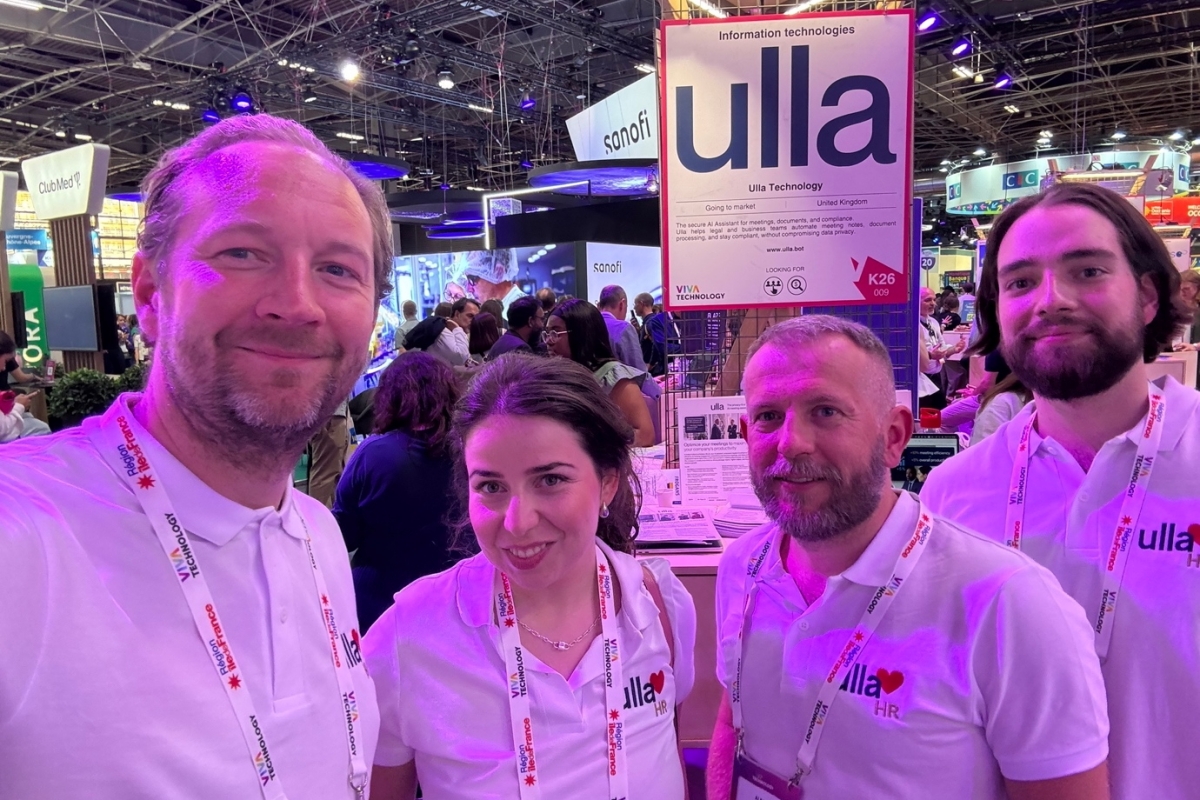Data Centre Security: Protecting Infrastructure from Physical and Cyber Threats
Data Centre Security: Protecting Infrastructure from Physical and Cyber Threats
Data Centres
Security Risk Management for Data Centre Infrastructure
Global data centres face rising climate risks, XDI report warns
Data centres are facing sharply rising risks from climate-change-driven extreme weather, according to a major new report released today by XDI (Cross Dependency Initiative), a company which is concerned with physical climate risk analysis.
The company argues that without urgent investment in emissions reduction and physical adaptation, operators could face soaring insurance premiums, growing disruption to operations, and billions in damages.
XDI’s 2025 Global Data Centre Physical Climate Risk and Adaptation Report offers a global picture of how extreme weather threatens the backbone of the digital economy. The report ranks leading data centre hubs by their exposure to eight climate hazards — flooding, tropical cyclones, forest fires, coastal inundation, and others — now and into the future and under different climate scenarios. It is based on analysis of nearly 9,000 operational and planned data centres worldwide.
The report quantifies how targeted structural adaptations (changes to the physical design and construction of data centres) can dramatically improve resilience, reduce risk, and help curb escalating insurance costs.
“Data centres are the silent engine of the global economy. But as extreme weather events become more frequent and severe, the physical structures underpinning our digital world are increasingly vulnerable,” says Karl Mallon, Founder of XDI (Cross Dependency Initiative).
"When so much depends on this critical infrastructure and with the sector growing exponentially, operators, investors, and governments can’t afford to be flying blind. Our analysis helps them see the global picture, identify where resilience investments are most needed, and chart pathways to reduce risk."
Key insights from the report include that:
• Data centre hubs in New Jersey, Hamburg, Shanghai, Tokyo, Hong Kong, Moskva, Bangkok, and Hovestaden are all in the top 20 for climate risk by 2050, with 20-64% of data centres in these hubs projected to be at high risk of physical damage from climate change hazards by 2050.
• APAC is the fastest growing region for data centre growth in the world, yet it also carries some of the greatest risk, with more than one in ten data centres already at high risk in 2025, becoming more than one in eight by 2050.
• Insurance costs for data centres globally could triple or quadruple by 2050 without decisive mitigation and adaptation.
• Targeted investments in resilience could save billions of dollars in damages annually.
The report highlights that climate risk varies dramatically by location, even between data centres in the same country or region. This kind of like-for-like, jurisdiction-spanning analysis, XDI argues, is critical for guiding smarter investment decisions in new and existing data centres - helping asset owners, operators, and investors allocate capital where it will have the greatest impact on protecting long-term value.
The report also reinforces that decarbonisation and adaptation must go hand in hand to safeguard the digital economy for the long term. Adaptation is essential, but the most resilient data centre is only as secure as the infrastructure it depends on — such as roads, water supply, and communications links — which are themselves vulnerable to climate hazards. Without ambitious and sustained investment in emissions reduction to limit the severity of climate change, no amount of structural hardening will fully protect these critical assets.
Joe Peck - 9 July 2025
Cyber Security Insights for Resilient Digital Defence
Data Centre Security: Protecting Infrastructure from Physical and Cyber Threats
News
Invicti launches new Application Security Platform
Cybersecurity company Invicti today announced the launch of what it calls its "next-gen" Application Security Platform, featuring AI-powered scanning capabilities, enhanced dynamic application security testing (DAST) performance, and full-spectrum visibility into application risk. The platform seeks to enable organisations to detect and fix vulnerabilities faster and with greater accuracy.
“Your applications are dynamic, shouldn’t your AppSec tools be too?” argues Neil Roseman, CEO of Invicti. “Attackers live in your runtime, but most security tools are stuck in static analysis. With Invicti, we’re cutting through the static with a DAST-first platform that continuously uncovers real risk in real time so security teams can take action with confidence.”
DAST improvements with AI
The latest release introduces enhancements to Invicti’s DAST engine, which, according to data provided by the company, include:
• Being 8x faster than leading competitors.• Finding 40% more high and critical vulnerabilities.• Delivering 99.98% accuracy with proof-based scanning.
Securing more of what matters
The company says the Invicti platform now combines AI-driven features and integrated discovery to "expose more of the real attack surface and deliver broader, more accurate security coverage." The main features include:
• LLM scanning — securing AI-generated code by identifying risks produced by large language models.• AI-powered DAST — revealing vulnerabilities that traditionally required manual penetration testing.• Integrated ASPM — bringing greater visibility into application posture, enabling teams to prioritise and manage risk across the SDLC.• Enhanced API detection — identifying and testing previously hidden or unmanaged APIs, now with native support for F5, NGINX, and Cloudflare.
“A stronger DAST engine gives our customers more than better scan results, it gives them clarity,” claims Kevin Gallagher, President of Invicti. “They can see what truly matters, cut through the noise, and move faster to reduce risk. This launch continues our push to make security actionable, efficient, and focused on what’s real.”
For more from Invicti, click here.
Joe Peck - 8 July 2025
Cyber Security Insights for Resilient Digital Defence
Data Centre Security: Protecting Infrastructure from Physical and Cyber Threats
Security Risk Management for Data Centre Infrastructure
'7% of organisations tackle vulnerabilities only when necessary'
A recent joint survey conducted by VDC Research, a technology market intelligence and consulting firm, and Kaspersky, a Russian multinational cybersecurity company, has highlighted an alarming trend: 7% of industrial organisations tackle vulnerabilities only when necessary. This leaves them exposed to unplanned downtime, production losses, and the reputational and financial damages that can result from possible cyber breaches.
The study, entitled Securing OT with Purpose-built Solutions, illuminates the shifting landscape of cybersecurity within the industrial sector. Focusing on key industries such as energy, utilities, manufacturing, and transportation, their research surveyed over 250 decision-makers to uncover trends and challenges faced in fortifying industrial environments against cyber threats.
A strong cybersecurity strategy begins with complete visibility into an organisation’s assets, allowing leaders to understand what assets need protection and to assess the highest risk areas. In environments where IT and OT systems converge, this demands more than just a comprehensive asset inventory. Organisations must implement a risk assessment methodology that is aligned with their operational realities. By establishing a clear asset baseline, organisations can engage in meaningful risk assessments that address both corporate risk criteria and the potential physical and cyber consequences of vulnerabilities.
Recent survey findings reveal a concerning trend: a significant number of organisations are not engaging in regular penetration testing or vulnerability assessments. Only 27.1% of respondents perform these critical evaluations on a monthly basis, while 48.4% conduct assessments every few months. Alarmingly, 16.7% do so only once or twice a year, and 7.4% address vulnerabilities solely as needed. This inconsistent approach could leave organisations vulnerable as they navigate an increasingly complex threat landscape.
Every software platform is inherently vulnerable to bugs, insecure code, and other weaknesses that malicious actors can exploit to compromise IT environments. For industrial companies, effective patch management is therefore crucial to mitigate these risks. That being said, studies reveal that many organisations encounter significant challenges in this area, often struggling to allocate the necessary time to pause operations for critical updates. Unnervingly, many organisations patch their OT systems only every few months or even longer, significantly heightening their risk exposure. Specifically, 31.4% apply patches monthly, while 46.9% do so every few months and 12.4% update only once or twice a year.
These challenges in maintaining effective patch management are exacerbated in OT environments, where limited device visibility, inconsistent vendor patch availability, specialised expertise requirements, and regulatory compliance add layers of complexity to the cybersecurity landscape.
As IT and OT systems increasingly converge, there is a pressing need to harmonise these traditionally disparate systems which have often relied on proprietary technologies rather than open standards. The challenge is further intensified by the rapid proliferation of Internet of Things (IoT) devices — ranging from cameras and smart sensors for asset tracking and health monitoring to advanced climate control systems. This explosion of connected devices broadens the attack surface for industrial organisations, underscoring the urgent need for robust cybersecurity measures.
Joe Peck - 20 June 2025
Artificial Intelligence in Data Centre Operations
Cyber Security Insights for Resilient Digital Defence
Data
Data Centre Operations: Optimising Infrastructure for Performance and Reliability
Data Centre Security: Protecting Infrastructure from Physical and Cyber Threats
'More than a third of UK businesses unprepared for AI risks'
Despite recognising artificial intelligence (AI) as a major threat, with nearly a third (30%) of UK organisations surveyed naming it among their top three risks, many remain significantly unprepared to manage AI risk.
Recent research from CyXcel, a global cyber security consultancy, highlights a concerning gap: nearly a third (29%) of UK businesses surveyed have only just implemented their first AI risk strategy - and 31% don’t have any AI governance policy in place.
This critical gap exposes organisations to substantial risks including data breaches, regulatory fines, reputational harm, and critical operational disruptions, especially as AI threats continue to grow and rapidly evolve. CyXcel’s research shows that nearly a fifth (18%) of UK and US companies surveyed are still not prepared for AI data poisoning, a type of cyberattack that targets the training datasets of AI and machine learning (ML) models, or for a deepfake or cloning security incident (16%).
Responding to these mounting threats and geopolitical challenges, CyXcel has launched its Digital Risk Management (DRM) platform, which aims to provide businesses with insight into evolving AI risks across major sectors, regardless of business size or jurisdiction. The DRM seeks to help organisations identify risk and implement the right policies and governance to mitigate them.
Megha Kumar, Chief Product Officer and Head of Geopolitical Risk at CyXcel, comments, “Organisations want to use AI but are worried about risks – especially as many do not have a policy and governance process in place. The CyXcel DRM provides clients across all sectors, especially those that have limited technological resources in house, with a robust tool to proactively manage digital risk and harness AI confidently and safely.”
Edward Lewis, CEO of CyXcel, adds, “The cybersecurity regulatory landscape is rapidly evolving and becoming more complex, especially for multinational organisations. Governments worldwide are enhancing protections for critical infrastructure and sensitive data through legislation like the EU’s Cyber Resilience Act, which mandates security measures such as automatic updates and incident reporting. Similarly, new laws are likely to arrive in the UK next year which introduce mandatory ransomware reporting and stronger regulatory powers. With new standards and controls continually emerging, staying current is essential.”
Joe Peck - 19 June 2025
Artificial Intelligence in Data Centre Operations
Data Centre Operations: Optimising Infrastructure for Performance and Reliability
Data Centre Security: Protecting Infrastructure from Physical and Cyber Threats
News
‘Businesses sleepwalking into cyber catastrophe’
Security leaders have warned that ‘businesses are sleepwalking into a cyber catastrophe’ due to the rapid adoption of AI tools, alongside lacking privacy and ethics controls, amid a wave of recent high-profile cyber-attacks and data leaks.
Arkadiy Ukolov, Co-Founder and CEO of Ulla Technology, a global HR platform, cautioned that many businesses are putting their data at risk by rushing off to use third-party AI tools as the main system to streamline operations.
The ongoing fallout from the M&S cyber-attack, alongside other major hits against Co-op, Dior, and Harrods, has highlighted the severity of data risks and how data is protected, forcing security teams to re-evaluate their protocols.
Speaking from the Viva Technology event in Paris, Arkadiy says, “Data breaches and cyber threats are relentless so it’s vital that industries such as HR, law, government, and beyond are securing every aspect of their technology stack to protect their data. Unfortunately, the speed of AI adoption means that many businesses are sleepwalking into a cyber catastrophe, leaving critical gaps in their data protection processes and putting both sensitive internal and customer data at risk.
“Even in an area such as meeting transcripts, there are sensitive conversations around company financials or workplace policy updates that cannot be exposed, requiring privacy-first collection and storage methods for data to protect against a breach. Understanding the risks and putting in place enterprise-grade security and data privacy can help businesses better guard against these risks, even with the added exposure from AI.”
Viva Technology, hosted this year between 11 and 14 June in Paris, is Europe’s largest startups and technology event, attracting over 150,000 attendees and 11,000 startups each year.
Key themes this year include the pace of AI innovation, regulation, the importance of human control, vertical industry applications for AI, and data security.
Joe Peck - 13 June 2025
Data Centre Security: Protecting Infrastructure from Physical and Cyber Threats
Data Centres
News
FFT chooses Keepit for data backup
Keepit, a global provider of a cloud backup and recovery platform, today announced that it has been selected by the French Tennis Federation (FFT) to independently backup its Microsoft 365, Microsoft Entra ID, and Power BI data.
The FFT chose Keepit as a sovereign backup solution, independent of major global cloud providers. The company is Danish and controls its entire hosting chain by operating its own cloud and data centres across Europe, the UK, Canada, Australia, and the US. Keepit's architecture reportedly met the FFT's requirements of security, independence, and business continuity.
"Until three years ago, we had no backup solution for our cloud environments. My objective was clear: to identify a European service provider guaranteeing maximum independence", says Franck Labat, Technical Director at FFT. “Beyond this initial requirement, Keepit was able to meet additional needs that we hadn't anticipated: centralised, traceable archiving of PST files, unified management of all our data via a single platform, and, more recently, seamless integration of our directory as part of our complete migration to Entra ID.”
The FFT, headquartered at Roland-Garros stadium, organises, coordinates, and promotes tennis for over 8,000 clubs throughout France. The FFT's operations also involve the management of a large number of seasonal employees as part of its event-driven activities, generating significant data flows to be processed and restored. To ensure consistent monitoring, the company needs to be able to recover data from people who have left, sometimes after short assignments, in order to pass it on to managers.
The collaboration began in 2022, alongside SCC France, a partner of the FFT for over 15 years, with the initial aim of safeguarding Microsoft 365 environments. Since then, the partnership has gradually expanded to include Power BI and Microsoft Entra ID. FFT now plans to integrate any new Microsoft solution it adopts into the Keepit ecosystem.
“We are particularly proud to have led this project alongside our partner SCC, offering the FFT an independent cloud backup and recovery platform that is simple to deploy and administer,” says Cyril VanAgt, Vice President Channel EMEA at Keepit. “We remain fully committed to supporting the next steps in the evolution of its cloud and Microsoft environments.”
For more from Keepit, click here.
Joe Peck - 10 June 2025
Artificial Intelligence in Data Centre Operations
Data Centre Operations: Optimising Infrastructure for Performance and Reliability
Data Centre Security: Protecting Infrastructure from Physical and Cyber Threats
News
House of Lords AI summit highlights cyber threats
Technology industry leaders gathered in the House of Lords yesterday for a high-profile debate on the transformative role artificial intelligence (AI) will play in the UK jobs market.
The discussion, chaired by Steven George-Hilley of Centropy PR, brought together experts to address key industry challenges, including the digital skills shortage and AI’s potential to enhance compliance and accelerate digital transformation across key areas of the UK economy.
The debate highlighted the growing role of AI in reshaping traditional job roles and powering a new wave of relentless cyber threats which could damage British businesses.
Key speakers, including Richard Cuda of Kasha, discussed the role AI and digital technology can play in helping entrepreneurs launch their own business.
Leigh Allen, Strategic Advisor, Cellebrite, says, "In a world where police forces are under increasing strain to combat crime and national security threats, AI technology represents a key enabler in unlocking digital evidence and significantly reducing investigation times. Cellebrite delivers secure, ethical access to digital evidence, using AI to accelerate investigations while closing the digital skills gap for modern law enforcement. We don’t just respond to digital threats—we equip agencies to lead with confidence in a complex, tech-driven world."
Dr Janet Bastiman, Chief Data Scientist, Napier AI, comments, "Financial crime is one of the biggest threats facing the UK economy right now, and in AI we have the answer. AI-driven anti-money laundering solutions have the capacity to save UK financial institutions £2.2 billion each year, helping to bolster compliance processes, improve the accuracy of transaction screening, and monitor transaction behaviour to more effectively identify criminal networks."
Linda Loader, Software Development Director, Resonate, suggests, "AI has the potential to significantly enhance operations in the rail industry by enabling faster and more efficient services. But this must be underpinned by quality data to drive innovative solutions that prioritise security and robust protection for our critical national infrastructure. By exploring smaller AI use cases now, we can build a solid foundation and understanding for more extensive, secure transport applications in future."
Chris Davison, CEO, NavLive, mentions, "By using cutting edge AI and robotics technology to create automated 2D and 3D models of buildings in real time, we can make retrofits, brownfield developments more efficient and contribute to sustainable building practices. NavLive saves architects, engineers and construction professionals time and money, by providing accurate real time spatial data across the lifecycle of a building."
Richard Bovey, Chief for Data, AND Digital, states, "The AI winners are the businesses that have invested the most in AI experimentation, underpinned by years of strong data foundations, meanwhile, SMEs are quickly watching a widening AI gap. But all isn’t lost, investing in data and modern tooling can stop the slide, helping businesses to keep pace and preventing a significant competitive disadvantage from taking over."
Arkadiy Ukolov, Co-Founder and CEO, Ulla Technology, says, "As AI adoption continues to skyrocket, we must ensure that privacy and data security remain a critical component of development. Most of the popular AI tools send data to third-party AI providers, which may use client data to train models. This is unacceptable for sensitive meeting discussions and confidential documents, as it opens them up to data leaks. Placing safety and ethics at the centre of the discussion is the only route that we can take forward as AI evolves."
For more on cyber security, click here.
Joe Peck - 21 May 2025
Artificial Intelligence in Data Centre Operations
Cyber Security Insights for Resilient Digital Defence
Data Centre Operations: Optimising Infrastructure for Performance and Reliability
Data Centre Security: Protecting Infrastructure from Physical and Cyber Threats
News
Scalable Network Attached Solutions for Modern Infrastructure
AI set to supercharge cyber threats by 2027
The UK’s National Cyber Security Centre (NCSC) has released a landmark cyber threat assessment, warning that rapid advances in artificial intelligence (AI) will make cyber attacks more frequent, effective and harder to detect by 2027. The digital divide between organisations with the resources to defend against digital threats, and those without, will inevitably increase.
Published on the opening day of CYBERUK, the UK’s flagship cyber security conference, the report outlines how both state and non-state actors are already exploiting AI to increase the speed, scale and sophistication of cyber operations. Generative AI is enabling more convincing phishing attacks and faster malware development. This significantly lowers the barrier to entry for cyber crime and cyber intelligence.
Of particular concern is the rising risk to the UK’s democratic processes, Critical National Infrastructure (CNI) and commercial sectors. Advanced language models and data analysis capabilities are used to craft highly persuasive content, resulting in more frequent attacks that are difficult to detect.
Andy Ward, SVP International at Absolute Security, says, “While AI offers significant opportunities to bolster defences, our research shows 54% of CISOs feel unprepared to respond to AI-enabled threats. That gap in readiness is exactly what attackers will take advantage of."
"To counter this, businesses must go beyond adopting new tools - they need a robust cyber resilience strategy built on real-time visibility, proactive threat detection, and the ability to isolate compromised devices at speed.”
This latest warning forms part of the UK Government’s wider cyber strategy after announcing the new AI Cyber Security Code of Practice earlier this year. This will form the basis of a new global standard to secure AI and ensure national security keeps pace with technological evolution, safeguarding the country against emerging digital threats.
For more from NCSC click here.
DCNN staff - 8 May 2025
Data
Data Centre Security: Protecting Infrastructure from Physical and Cyber Threats
News
Infosecurity Europe launches new cyber security masterclasses
Infosecurity Europe has announced the launch of ‘Infosecurity Europe Masterclasses, powered by SANS Institute’, an exclusive new training initiative designed to equip cybersecurity professionals with hands-on, practical skills.
Developed for Infosecurity Europe 2025, the Masterclasses will offer three deep-dive sessions covering Digital Forensics, Cloud Security and Security Culture. Each masterclass will be delivered by a SANS-certified instructor and will take place in the South Gallery Rooms at ExCeL London during the event. The Digital Forensics and Cloud Security Masterclasses will be held on Tuesday 3 June, with the Security Culture Masterclass on Wednesday 4 June.
Introducing these masterclasses highlights the growing demand for specialised training as organisations contend with an increasingly complex threat landscape. Infosecurity Europe has long been a hub for industry leaders to share knowledge, explore innovative solutions, and foster collaboration. The partnership with SANS Institute builds on this and enhances the event's educational offering.
"Partnering with Infosecurity Europe and bringing hands-on masterclasses to this year’s event is a pivotal moment to elevate security readiness across the UK and Europe,” says John Davis, UK Director, SANS Institute.
“This collaboration will support cyber security professionals with the practical skills they need to stay ahead of emerging threats. Continuous learning is essential in an industry that evolves at such a rapid pace, and by providing hands-on, immersive experiences, we are ensuring that security practitioners can apply cutting-edge techniques in real-world scenarios to make an immediate impact within their organisations,"
The masterclasses are designed to deliver practical, actionable insights and are tailored to help cyber security professionals tackle modern challenges head-on.
The Digital Forensics Masterclass will be led by SANS Certified Instructor Kathryn Hedley and will provide practical experience in decoding file signatures, data recovery techniques and forensic disk image exploration. Attendees will learn how to extract and interpret critical digital evidence across platforms, equipping them with the skills to handle complex forensic investigations. This session aligns closely with industry demand, as over 50% of organisations plan to increase investment in incident response and forensics according to Infosecurity Europe’s 2025 Cybersecurity Trends Report.
With 65% of cyber security leaders also planning an increase in cloud security investment, the Cloud Security Masterclass is key to guiding participants through advanced cloud security practices. Hosted by SANS Certified Instructor Simon Vernon, topics will include securing logging setups in Azure and preventing remote code execution.
On day two, the Security Culture Masterclass will be fronted by SANS Certified Instructor John Scott and will directly address key challenges faced by organisations. Infosecurity Europe’s report shows respondents citing lack of accountability and identifying communication gaps between departments as major obstacles to building a strong cyber security culture. This interactive session will address these challenges and more with a focus on embedding a resilient security culture within organisations.
Participants will engage in the Cyber42 Game Day simulation, where they will navigate real-world decision-making scenarios to strengthen their leadership and cultural impact.
Carly Weller - 14 April 2025
Cyber Security Insights for Resilient Digital Defence
Data
Data Centre Security: Protecting Infrastructure from Physical and Cyber Threats
Enterprise Network Infrastructure: Design, Performance & Security
News
Cyber attacks drop by nearly 10%
Four in 10 (43%) of UK businesses and 30% of charities experienced cyber attacks or data breaches in the last 12 months, according to the latest Cyber Security Breaches Survey. While this marks a slight decrease from last year’s 50%, the threat level for medium and large businesses remains alarmingly high.
The average cost of the most disruptive breach was estimated at £1,600 for businesses and £3,240 for charities.
The drop in incidents is attributed mainly to fewer small businesses reporting breaches – but government officials warn against complacency. With cyber threats increasingly targeting critical infrastructure, the UK Government is introducing the Cyber Security and Resilience Bill, compelling organisations to strengthen their digital defences.
The survey found that 70% of large businesses now have a formal cyber strategy in place, compared to just 57% of medium-sized firms – exposing a potential gap in preparedness among mid-sized enterprises.
There has been a notable improvement in cyber hygiene practices among smaller businesses, with rising adoption of risk assessments, cyber insurance, formal cyber security policies and continuity planning.
These steps are seen as essential in building digital resilience across the UK economy.
However, the number of high-income charities implementing best practices such as risk assessments has declined. Insights suggest this may be linked to budgetary pressures, limiting their ability to invest in adequate cyber security measures.
Sawan Joshi, Group Director of Information Security at FDM Group, comments, “Keeping banking systems online is becoming more challenging, and technology alone isn’t enough. Skilled IT teams are crucial for spotting risks early and responding quickly to prevent disruptions. Organisations need to invest in ongoing training so their staff can strengthen system defences and recover fast when issues arise. A mix of advanced monitoring, backup systems, and a well-trained workforce is key to keeping services running and maintaining customer trust.'"
The Government has also confirmed that UK data centres are now officially designated as critical national infrastructure. This means they will receive the same priority in the event of a major incident - such as a cyber attack - as essential services like water and energy.
Carly Weller - 11 April 2025

Head office & Accounts:
Suite 14, 6-8 Revenge Road, Lordswood
Kent ME5 8UD
T: +44 (0)1634 673163
F: +44 (0)1634 673173









